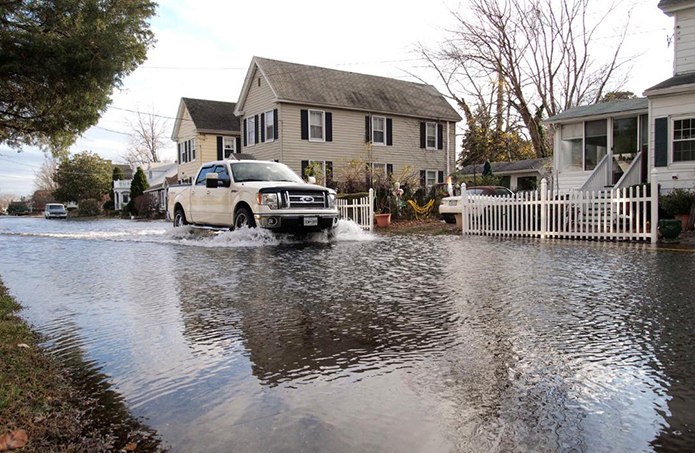By Jeremy Cox
Bay Journal
A new National Oceanic and Atmospheric Administration report, shows that rising seas are inducing a particular type of increased flooding around the country.
The phenomenon, known as high-tide or “sunny day” flooding because of the absence of rainfall as a trigger, struck a median of five days last year at nearly 100 coastal locations, tying the record set in 2015.
The “median” is the level at which there are as many occurrences below the value as above it.
The problem was worse in the Northeast, which includes the Chesapeake watershed. The report, released on July 10, showed this region with a median of 10 days of high-tide flooding. The following Chesapeake-area cities carved out new records:
- Annapolis, 12 days
- Baltimore, 12 days
- Washington, D.C., 22 days
Overall, a dozen locations nationwide broke or tied their high-tide flooding records, NOAA said.
Higher-than-normal year projected
Don’t expect to dry out anytime soon. This year is projected to be another higher-than-normal year for 40 locations around the U.S. as a minor El Nino, the periodic phenomenon that brings more rain to much of the United States, lingers into early next year, researchers said.
The national median frequency of high-tide flooding is expected to be twice as high as it was in 2000.
The Northeast Atlantic is forecast to have a median of eight days of flooding, up 140% from 2000.
New records for such flooding are expected to be set next year and “for years and decades to come” as seas continue to rise, according to the report. The number of high-tide days is predicted to reach a national median of 25-75 days by 2050, depending on how much action is taken to reduce global emissions of greenhouse gases such as carbon dioxide.
High-tide flooding is already wreaking havoc across the country, disrupting traffic, exacerbating beach erosion and lowering property values, according to the report’s authors. Another consequence they point to cites a March 2019 article in the Bay Journal, which described how high-tide flooding is contributing to saltwater intrusion on cropland on the Delmarva Peninsula.
“Once communities realize they are susceptible to high-tide flooding, they need to begin to address the impacts, which can become chronic rather quickly,” said William Sweet, a NOAA oceanographer and lead author of the report. “Communities find themselves not knowing what to expect next year and the decades to come, which makes planning difficult. Our high tide projections can play a vital role in helping them plan mitigation and other remedies.”




Recent Comments